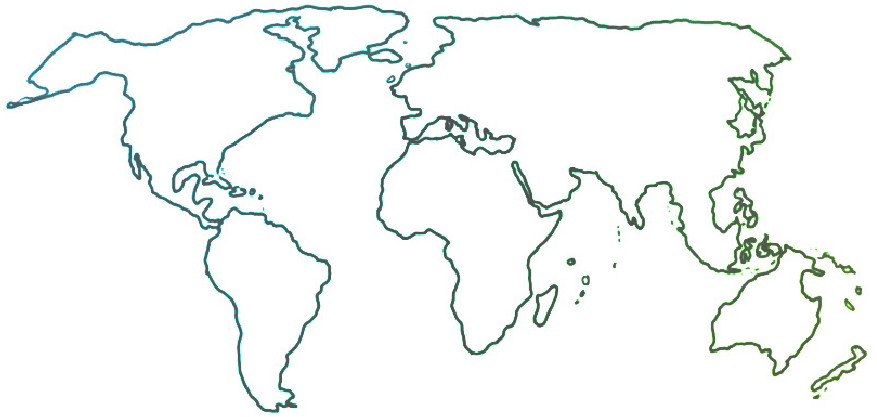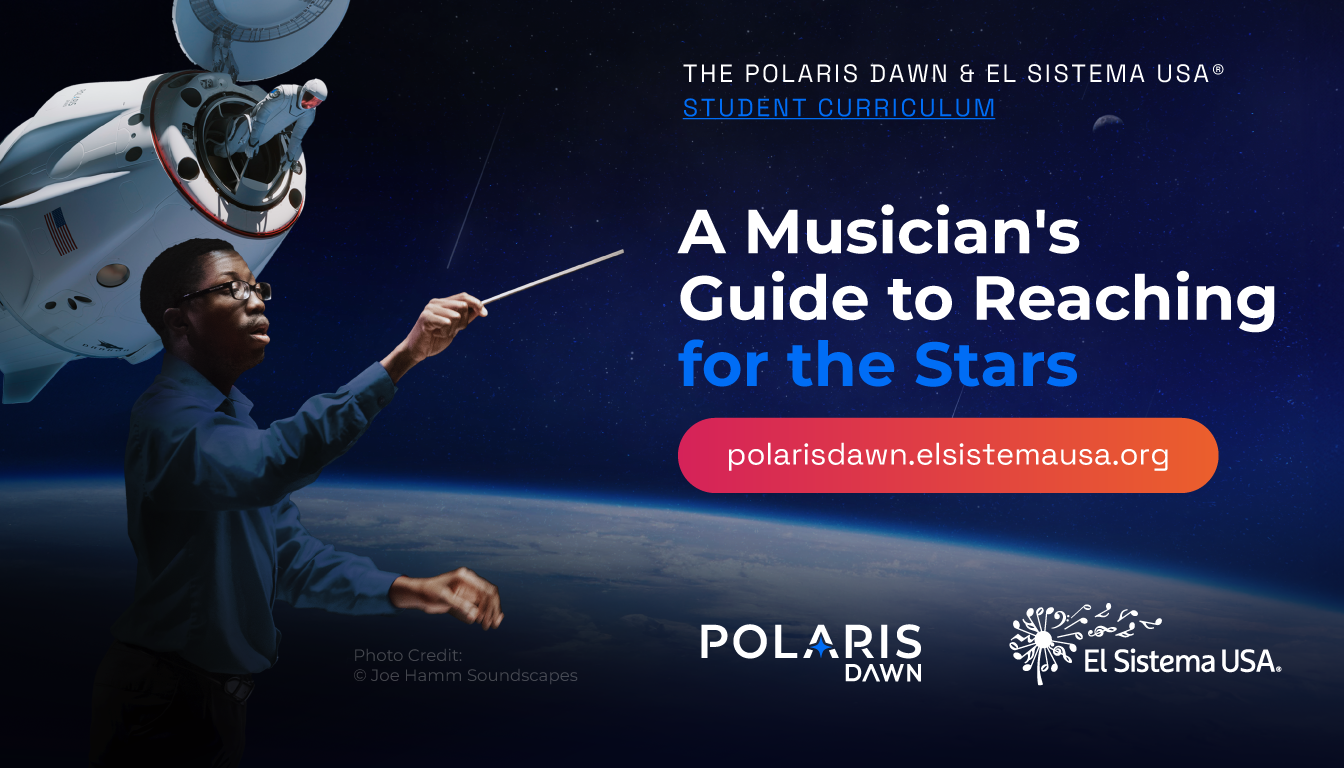
EDITORIAL
A Musician’s Guide to Reaching for the Stars

A year ago, I received a phone call asking me if El Sistema USA® wanted to partner with a commercial mission to space called Polaris Dawn. I was as surprised to get this call as you probably are to hear about it. My first thought was: Why El Sistema USA?
The unlikely answer: Polaris Dawn Mission Specialist and Crewmember Sarah Gillis is a classically trained violinist who wanted to use the upcoming mission to space as a platform to highlight the value of music education for all children. Sarah was raised to be a classical violinist (her first violin teacher was her mom, Sue Levine, a music educator and Suzuki teacher). Although raised to be a classical violinist, Sarah changed direction when a high-school mentor, former NASA astronaut Joe Tanner, encouraged her to pursue a degree in aerospace engineering. She became an engineer at SpaceX and, recently, a soon-to-be astronaut. Her first idea for our partnership was to create a curriculum highlighting the connections between music and science.
After that call, a partnership began to flourish—showing me why our work in the music education field can connect with much broader initiatives, and how we as a field can think bigger to facilitate larger outcomes for our students.

Sarah worked with the ESUSA team of Erin Wight, Gabrielle Molina, and me for several months to create the curriculum A Musician’s Guide to Reaching for the Stars. Meeting by Zoom (with Sarah often joining in the middle of long “space training” days), we began by imagining possibilities and identifying throughlines between music and science. Initially, we were swept away by the vast array of classical music that invites us to fantasize about space travel: Ricard Strauss’s iconic “Also Sprach Zarathustra;” John Williams’ soundtracks, from Star Wars to E.T.; and Kevin Day’s many space-themed scores, including Lightspeed. As the project developed, we began to see greater overlaps in the skills required to succeed in both fields: the sheer amount of time and patience required to train for a brief mission; the need to break down complex tasks into the smallest chunks, and then repeat them; and, above all, the ability to share with and listen to one another, working not only as teammates but as members of a community.
Even still, this is an unusual partnership, so it’s important that we continue to ask ourselves which outcomes we’re pursuing. On one level, the answer is simple and exciting: we don’t yet know where this will lead. That alone feels worthwhile. In taking a bold step, we’re hoping to model the same boldness we ask of our students. We want them to see themselves going many places—even space.
Larger outcomes are also essential for us as an organization. El Sistema USA’s success depends on asking the ongoing question: how can our work relate to the world around us? We don’t exist in a silo. We must continue to find the relevance of our work to the larger movements of our time, whether it is education reform, economic justice, racial and gender equity in music and STEM careers, or others.
If our work in El Sistema has stretched the music performance and education space, what happens when our students and ideas are brought into other sectors? Yes, our goals are musical, but they are so much bigger, too. In ESUSA’s Summary of Field Data 2024 on the Impact of Music on Children, we identified five categories of positive outcomes that repeatedly came up in the field research: academic and school performance, brain development, college and career readiness, social-emotional learning, and health and wellbeing. These results weren’t surprising: we know that our alumni are motivated, connected, socially aware, and independent students who go eagerly into the world seeking to impact their communities. And we know that their experiences as students in our programs—frequent performances, consistent community connections, close mentors, and broad leadership opportunities—have had a profound impact on them. We are just beginning to learn the effects of deep investment in students over a prolonged period of time, but we can already see that if we invest in students deeply through music, they will have a better chance of bringing values from their music education—their creativity, problem-solving skills, confidence, social awareness, and full selves—to a world that urgently needs those qualities.
There is no playbook when entering new kinds of partnerships. In working on our new curriculum with Sarah Gillis, whenever we hit a speed bump or challenge, we kept reminding ourselves that no one has ever done this before—there is no library of space-music curricula or space-music conferences we could reference! Additionally, the implementation of this curriculum presents challenges. How comfortable are music teachers in talking about science and engineering content? How comfortable are science teachers with music integration? We are asking educators to also think broadly and try new things.
It takes time for new ideas to build momentum. This is a reminder for all of us to be imaginative in our partnerships and classrooms, to consider possibilities where we haven’t before, and to be patient with ourselves as we navigate new territory.
The truth remains: as musicians and artists, there is nowhere we don’t belong. The sooner we teach our students that they have powerful tools to connect with people, to spark social action, to speak to the world—the more potent and influential and effective we will be.
Through music, we are reminded that we can reach for the stars as a field, both figuratively and literally.
If you would like to access the Musician’s Guide to Reaching for the Stars curriculum, visit the free website here to dive into its five modules, each featuring videos and engaging activities (called “Challenges”) that weave together Gillis’s personal story, a look at the Polaris Dawn crew’s mission prep, musical activities, and self-reflection exercises. In addition to printable versions of these “Challenge” activities, ideas for classroom use that address National Core Arts Standards and elements of the CASEL Framework can be found on the For Educators page. This was developed for a wide range of ages (3rd grade +) and classroom types.

